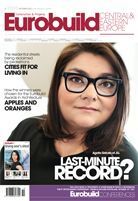The sixteen-member jury of the Eurobuild Awards in Architecture 2017 has now decided on the best projects in the following categories: Office Building of the Year, Revitalisation of the Year, Workplace Solution of the Year, Eco-Friendly and User-Friendly Facility of the Year, and Public Utility Place of the Year. The jurors assessed the architectural assets of buildings, how well they integrated with their surroundings, their functionality, the materials and technologies used and how sustainable and environmentally-friendly they were. They also took into consideration the criteria necessary for these types of projects. In the nominations for the Office Building of the Year, there were projects by major international developers as well as by local players, which varied in terms of size, style and approach. The choice in this category turned out to be an extremely difficult one and so after the first selection the jury decided that five projects should go through to the final round, as o






























































